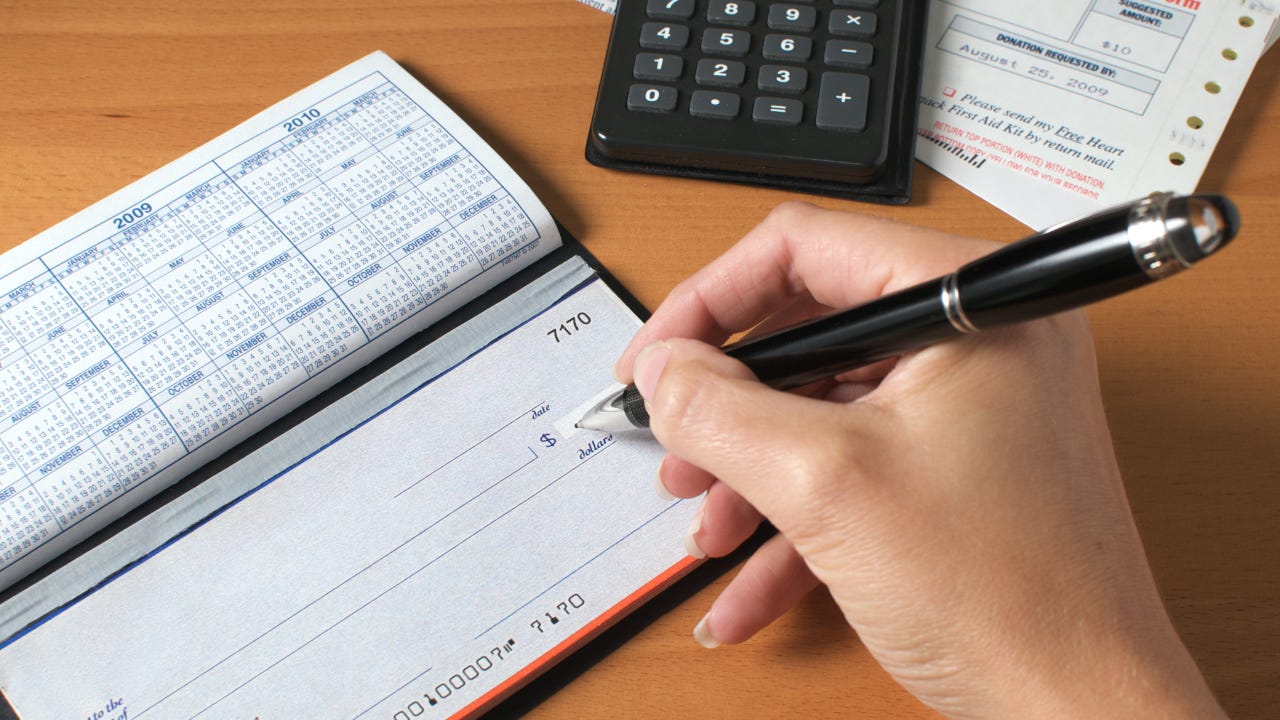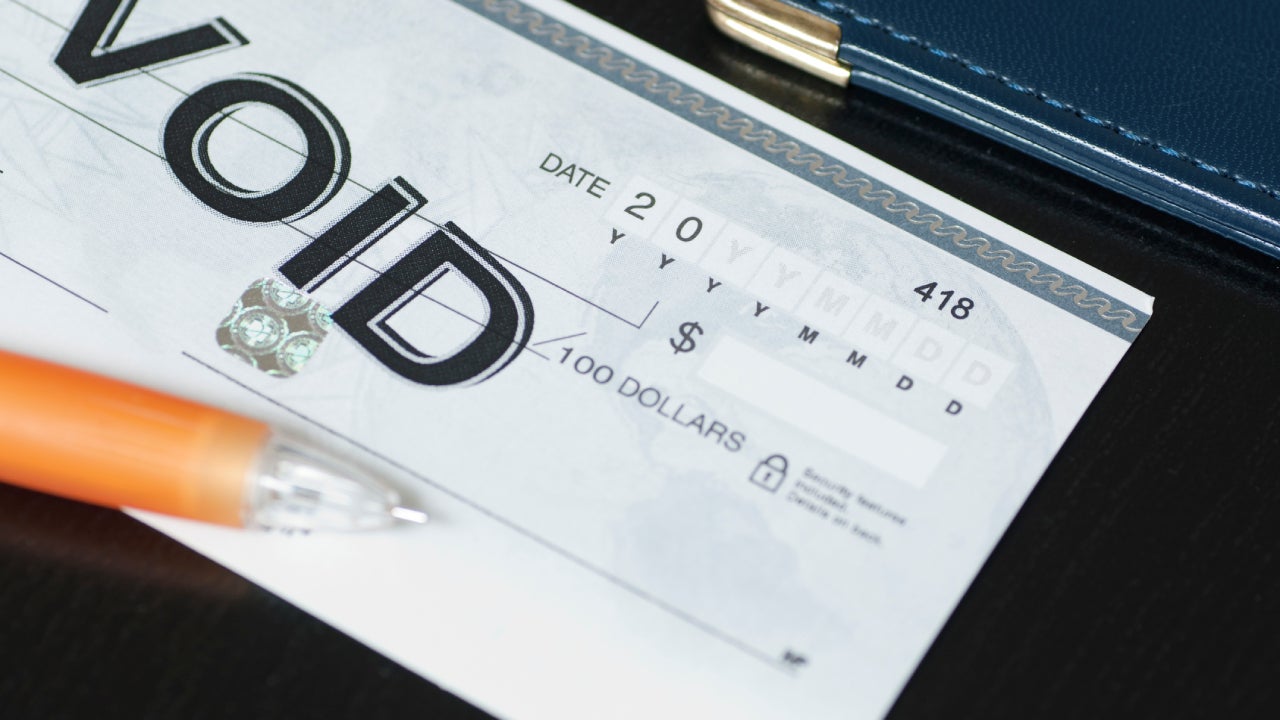What is a bounced check and how do you avoid it?




Our writers and editors used an in-house natural language generation platform to assist with portions of this article, allowing them to focus on adding information that is uniquely helpful. The article was reviewed, fact-checked and edited by our editorial staff prior to publication.
Paper checks may not be as common as they once were, but there are still times when they’re a practical form of payment — that is, until they bounce.
A check bounces when there isn’t enough money in the check writer’s account, or when there’s another issue with the check or connected account. Aside from the inconvenience, bounced checks can lead to fees and other financial ramifications for both the check writer and recipient. Here is a detailed look at why checks bounce and how you can avoid it.
Key takeaways
- A bounced check can result in various negative financial consequences such as penalty fees, overdraft fees, outstanding debts and a damaged banking reputation.
- There are several reasons why a check can bounce, but it’s often due to insufficient funds in the payer’s bank account.
What is a bounced check?
A bounced check is a check for which there aren’t enough funds in the bank customer’s account to cover it. The bank declines to honor the check and “bounces” it back to the account holder, who is typically charged a penalty fee for nonsufficient funds (NSF).
A bounced check is sometimes called a “rubber check.” Checks can bounce for a variety of reasons, including lack of funds, errors with how the check is filled out or a freeze on the payer’s account.
When a check bounces, the payee doesn’t receive the intended funds, resulting in financial consequences for the check-writer. There can also be consequences for the recipient of the check. For example, if you deposit a check, spend some of the funds, and the check later bounces, you may be on the hook to reimburse the bank and pay a fee.
What happens when a check bounces?
Several things can happen when a bank account holder bounces a check. Here are six consequences.
Nonsufficient funds (NSF) fee
When you don’t have enough funds to cover a check, your bank likely will charge you an NSF fee. Additionally, the check recipient’s bank may also charge the recipient a fee. The average NSF fee, according to Bankrate’s 2024 Checking Account and ATM Fee Study, is $17.72.
Overdraft fee
In some cases, if you write a check without enough money in your account to cover it, your bank might decide to cover the amount for you. This is known as overdraft protection. However, the bank will then charge you an overdraft fee for this service, which is $27.08 on average, according to Bankrate’s study. You can avoid this scenario by opting out of overdraft protection, which means your bank would decline any transaction that would overdraw your account. However, you could still face NSF fees for bounced checks.
Bounced checks and penalty fees can snowball quickly, as banks can charge overdraft fees multiple times a day for each transaction that overdraws the account.
Keep in mind not all banks charge overdraft fees, and some have dramatically reduced them. If you’re worried about incurring these charges, choose a bank that’s cut or eliminated overdraft fees. You can also look for free checking accounts, which often have no overdraft fees.
Overdraft fees and nonsufficient funds (NSF) fees are related but different. A bank may charge overdraft fees when they pay for a transaction that overdraws your account. On the other hand, a bank may charge an NSF fee when you attempt to spend more than you have. In this case, the transaction is declined, and your bank charges you the NSF fee.
Outstanding bills
When a check bounces, the person you attempted to pay doesn’t receive the funds, so you’re still on the hook for that bill. For example, if your monthly rent check bounces, your landlord doesn’t get paid — and you’re late on rent.
Besides the bank penalties you incur, you’ll have outstanding debt until you can pay the rent and you could possibly face damage to your credit score.
Other penalties/fees
Besides NSF or overdraft fees charged by your bank, the payee might penalize you, too. The landlord who got the rubber check for your monthly rent could charge you a penalty.
If you’re late with a payment, such as to a utility or lender, because the check bounced, you’ll likely be charged a penalty, especially if it’s not your first time. Financial institutions such as credit card companies often forgive penalties for established customers with excellent payment histories.
Damaged banking record
ChexSystems is a consumer reporting agency that helps banks and other financial institutions assess a potential customer’s reliability.
ChexSystems keeps a record of your banking behavior. If you have a history of bounced checks, unpaid fees and forced account closures, your ChexSystems report will reflect that.
Banks look at the ChexSystems reports of their account applicants. If your report is blemished, a bank may deny your application. Consumers in this situation may have to apply for a second-chance checking account until they can qualify for a traditional account.
Closed bank accounts
If you bounce enough checks, your bank could freeze or close your account. Talk with a bank representative if you are having trouble managing your account.
The bank may be more willing to work with you if it sees that you earnestly want to fix the problem.
Why do checks bounce?
There are several causes of bounced checks.
Insufficient funds
If you write a check for $1,500, but you have only $1,000 in the bank, it will bounce when the payee tries to cash it because you don’t have enough funds to cover the amount written on the check.
You’ll probably pay a penalty fee to your bank for writing a rubber check.
Stale date
Banks aren’t required to cash checks that are more than six months old. If you write a check and the payee puts it in a drawer and forgets about it until seven months later, you may have to write the payee a new check.
Ask your bank about its procedures for handling stale checks. If it believes the check will clear, it can go ahead and process it, but it’s not required to after six months.
Check not filled out correctly
If a check has incorrect or missing information, it could bounce. A few details to double-check before handing a payee a check include:
- The date on the check is correct. It’s important to know that banks are allowed to process post-dated checks before the date on the check, so be sure you have sufficient funds in the account when you write the check.
- The numbers and words for the check amount match. The check amount is written on the check twice, in numbers and words. Be sure the two amounts match.
- The check is signed in the right place by an authorized signer on the account.
Knowing how to properly fill out a check helps you avoid errors that can cause a check to bounce.
What to do if you bounce a check
If you’ve bounced a check, don’t panic. Here are a few ways to resolve it:
- Contact your bank and the recipient immediately: Open and honest communication can help alleviate some of the potential negative outcomes associated with bouncing a check. Make sure to pay any bank fees incurred, so they don’t accumulate.
- Make payment arrangements: If possible, quickly cover the owed amount to prevent the bounced check from turning into an outstanding debt.
- Consider alternative payment methods: If you find yourself frequently close to overdrawing your account, consider using other payment methods such as electronic transfers, debit cards and peer-to-peer payment apps.
- In a pinch, you can use a payday advance app to smooth out cash flow and make ends meet so you don’t bounce a check. But beware of getting trapped in a cycle of borrowing.
Remember, knowingly writing checks without sufficient funds can lead to legal repercussions. It’s always better to be safe than sorry when it comes to managing your finances.
How to avoid writing a bad check
A bounced check is an expensive error. Not only can your bank penalize you, the payee might do the same. There are a few ways to keep checks from bouncing and avoid NSF fees.
- Add overdraft protection to your account. This is an optional service that many banks offer their checking account customers. With overdraft protection, the bank covers a check if you don’t have enough money in your account. Banks charge a fee for this feature and there are usually limits on check amounts.
- Add a linked account for overdrafts. Your bank may allow you to connect a savings account (or other source of funds) to your checking account to cover a transaction and keep your balance from going into the red.
- Set up account alerts. Use your bank’s mobile app to receive instant notifications of a low balance and other account activity.
- Monitor the account closely. Check your balance often, make sure checks clear and automatic deposits show up. You can also consider using a bank with a built-in budgeting tool, which can help you keep closer tabs on your cash flow.
Consider opening a high-yield savings account to link to your checking account. Doing so has a major perk: It allows you to earn more interest on your savings while keeping your cash accessible for overdrafts and emergencies.
Bottom line
Bouncing a check can have financial consequences, such as penalty fees, but there are steps you can take to avoid writing a bad check. These include staying vigilant about your account balance, considering alternative payment methods and adding safeguards such as overdraft protection and linked accounts.
Why we ask for feedback Your feedback helps us improve our content and services. It takes less than a minute to complete.
Your responses are anonymous and will only be used for improving our website.
You may also like




